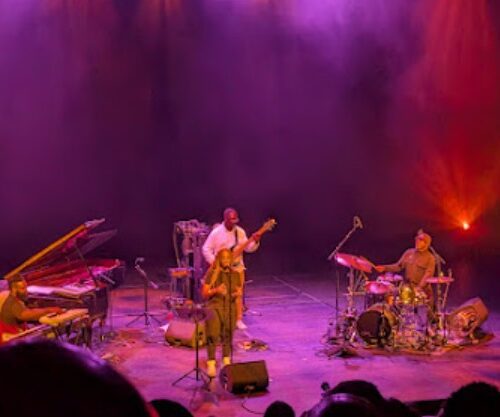In Balinese music, as in any living tradition, contemporaneity manifests itself in many ways. One of today’s major gamelan trends is to compose for custom-made instrument ensembles or to adapt them to specific compositional needs. Gamelan Pesel is one such ensemble, innovating both with its music and with its instrument making. And as the title of this second album suggests (Pesta Nada: Feast of Notes), it’s all done with joy and glee.
Gamelan Pesel is the project of young composer I Wayan Arik Wirawan and some twenty young musicians from the Denpasar region, capital of Bali. The ensemble was founded around hybrid instruments combining the properties of the Gamelan Selonding, an old iron orchestra in the middle of the Renaissance period, and the Gamelan Semar Pegulingan, a bronze orchestra once associated with court music. Pesel’s metallophones are made of iron, while all its gongs are made of bronze. What’s more, the tuning was freely inspired by the tempered major scale while preserving tuning differences of a few hertz from one instrument to the next. It’s thus quite unusual to hear a gamelan tuned diatonically, but which preserves the acoustic beating typical of Balinese music.
Pesta Nada is made up of 7 original pieces by Wirawan, all highly energetic and catchy. The approach is a far cry from the formal abstractions and experimentalism of many of today’s Balinese artists. Instead, the compositions are playful and joyful and move through a variety of lively tempi. The famous interlocking melodies (kotekan) of the metallophones come through with intoxicating clarity. The modern playing techniques employed on these iron instruments give them a rich, unique timbre. The quality of the recording lets you hear the finesse of the playing dynamics, as well as the subtle rhythmic interactions between the drums (kendang) and the chime of gongs (reong).
The radiance of a smile, a kite in the sky, the beauty of a beach, the fun of laughter, and the value of fire—all these evocations meet in a candid celebration of music, life, and the elements. These themes tie in naturally with the legacy of Balinese gamelan, which is often used as an instrument for both religious and secular ceremonies. Gamelan Pesel amazes in the ease with which it innovates without breaking with its heritage and traditional idioms.
























